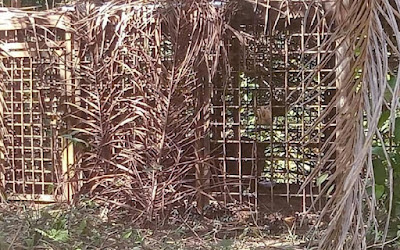Authorities in Kelantan State, Peninsula Malaysia have begun capturing wild Malaysian Tigers, Panthera tigris jacksoni, following a series of attacks on workers and others on Rubber plantations in the northeast of the country. Traps have been set in forests close to plantations, with two Tigers captured to date, both of which have been sent to a wildlife sanctuary.
The first death occurred on 9 May 2023, when Halim Asin, a member of the Orang Asli indigenous community, was attacked while fishing on the Sg Aring River with his nephew, and later found dead. On 5 October, when another Orang Asli man, Pisie Amud, 25, was attacked and killed why on a fishing trip in the Pos Pasik Forest. On 10 November, Lalu Sukarya Yahya, 42, an Indonesian migrant worker employed as a rubber tapper on a rubber plantation in Kuala Wok near Pos Pasik. The following day, another migrant worker, Ahka Soe Ya, 22, from Myanmar, was attacked by a Tiger while working on Rubber plantation in Kampung Meranto alongside his wife. He was taken to hospital by four Myanmar nationals, thought to be his wife and their friends, but died of injuries to his head and neck. Between 2017 and 2022 only four Tiger attacks were recorded in the state, two of which were fatal.
The attacks have been blamed upon male Tigers roaming in search of and mates, or else young Tigers learning to hunt and looking for territories of their own. However, it is likely that a change in forest use by Humans in the region is as much to blame. Since the 1980s logging in Malaysian forest reserves has been selective, with loggers only allowed to remove certain trees, leaving the essential structure of the forest unchanged. This changed in 2007 when a new government policy has allowed for the clearing of areas of natural forest for plantation forestry, in which trees are grown on a cycle of felling and replanting. These plantations typically comprise monocultures of trees such as Rubber, Acacia and Eucalyptus, which support far less wildlife than natural forests, providing less food for Tigers, and causing them to roam further afield, and consider non-preferred food items, such as Humans.
The status of Malaysian Tigers is subject to some dispute. The population in Peninsula Malaysia, which comprises about 200 adult individuals, has been considered to be a separate subspecies, Panthera tigris jacksoni (sometimes Panthera tigris malayensis) since 2004, with that subspecies regarded as Critically Endangered under the terms of the International Union for the Conservation of Nature's Red List of Threatened Species. However, it is also argued that Malaysian Tigers are not sufficiently distinct to merit this status and that they should be regarded as a population of the Asian Tiger, Panthera tigris tigris, which is regarded as Endangered, a lower threat of extinction, with a much larger population, found from Malaysia to Siberia.
See also...
Follow Sciency Thoughts on Facebook.
Follow Sciency Thoughts on Twitter.









